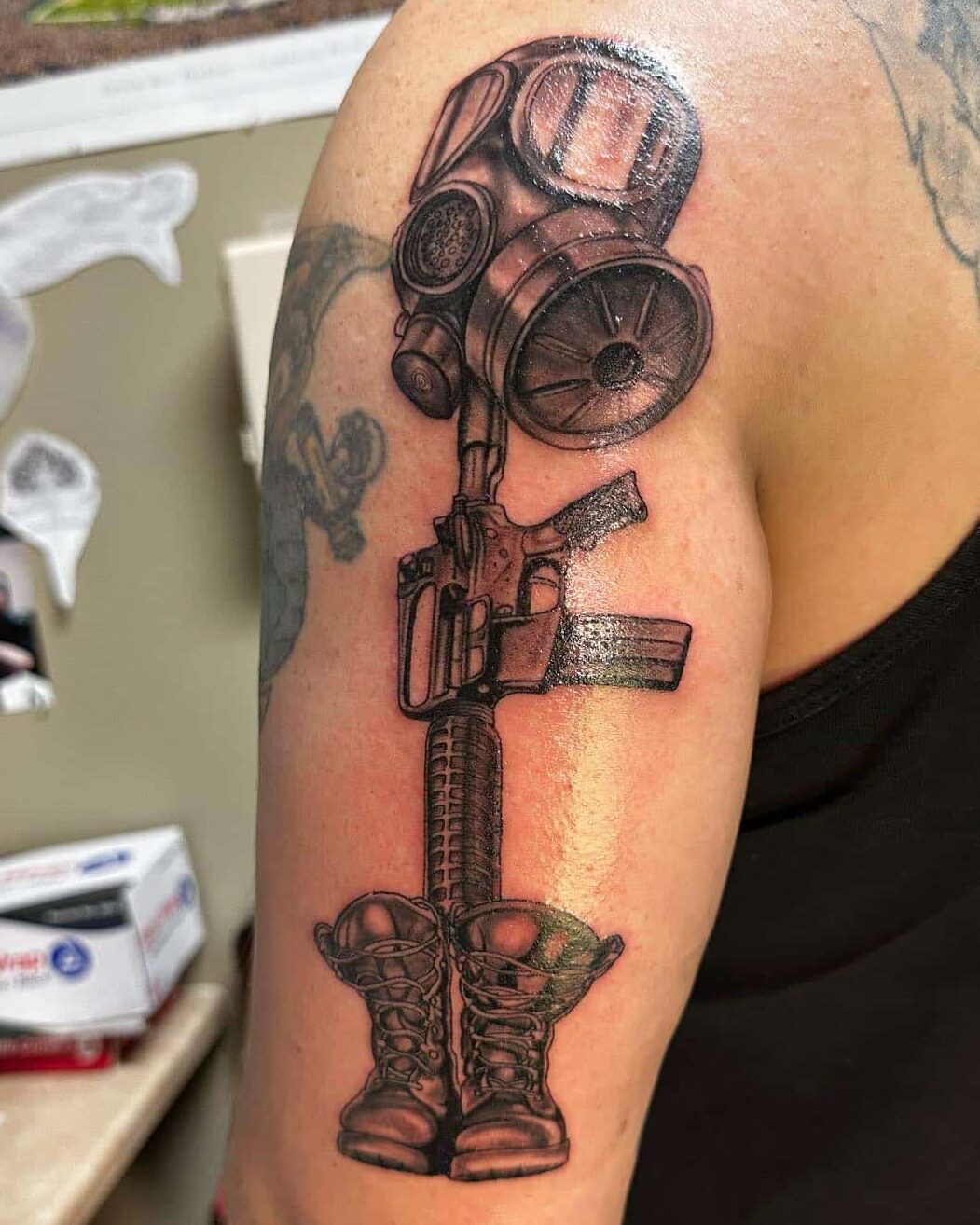TATTOOS HAVE A HISTORY LINKED WITH WAR

It's important to reflect on the sacrifices our soldiers have given since the Revolutionary War. Average Americans have always risen to the challenge time and time again since before its official founding. During the Revolutionary, Spanish/American, and Civil wars, men who had never even touched a gun in their life, took up arms to defend their country.
EARLY MANKIND
Tattoos and war have been connected for thousands of years. Warriors from all kinds of cultures around the world have historical evidence to tattoos or war paint given before or after a battle, and sometime both. Tattoos and war paint were used as a means of intimidation, and to make the warrior to appear more fierce. The Norse were known to darken around their eyes to look menacing, but it's unknown if they were permanent tattoos, paint, or even soot.
It's well documented that Native Americans often donned war paint, and even painted their horses in anticipation for a battle or for a hunt. Although not as common as just using paint, Native American tribes did practice permanent tattoos and body modification. Permanent ink was usually linked to an achievement, often attributed to glory against a powerful foe. It was a big deal if a warrior took down a chief. Not something to be taken lightly.
COLONIAL AMERICA
Colonial era British navy men often got tattoos representing what regiment and ship they were assigned to. Everyone from the common seaman, petty officers, and all the way to an Admiral would have tattoos, as they weren't class based, but more of a camaraderie. It wasn't unheard of to also have your family crest as a tattoo.
Early colonial Americans would sometimes get tattoos of their name and where they live in the colonies due to the common event that they would essentially be kidnapped and conscripted into the British Navy, and their tattoo was the only proof they could provide that they weren't actually British citizens or navy deserters.
WARS OF THE 20TH CENTURY
Starting around WWI, and although not nearly as common as during WWII, US military, particularly in the navy, would often get tattoos as keepsakes and in remembrance of the places they've been during their wartime travels. Like the early British navy, it didn't matter the rank or class, everyone got tattoos. The most common style seen was what is now called, American Traditional. Back then, it was just your standard tattoo. Nearly everyone who had a grandfather survive WWII can remember their grandfathers tattoos. Thick lined, faded, sometimes you barely make out what it was. Maybe an anchor? A hula dancer?
Unfortunately, during WWII, there was some well known forced tattoos. In an unfortunate time for Germany, Jewish prisoners were all tattooed on the forearm/wrist a serial number for cataloging and tracking. They were essentially branded like animals. This wasn't condoned by the vast majority of Germans, of course, but it still happened.
If you didn't turn a blind eye to the atrocities of the war, the ones in power could mark you as a Jewish sympathizer and you could be executed. However, there was a substantial underground resistance that attempted multiple times to take out Hitler and his higher-ups, but without success. They were eventually discovered and executed as traitors. The most famous of these attempts was an elaborate scheme known as "Operation Valkyrie."
The practice of getting tattoos while in the military continued on to the Vietnam War. A different type of tattoo appeared during this "police action". Unlike during WWII, a lot of the tattoos no longer appeared to be of a docile subject matter, like a hula dancer (although a fairly racist term towards the Japanese in the form of a tattoo was common in WWII). The tattoos appeared more geared towards violence and glory. Skulls, the ace of spades, anti-asian sentiments, images of machines of war (such as tanks and helicopters), and so on.
MODERN MILITARY
In today's US military, the tattoos have become often symbolic. US flags, eagles, ;IGY6 (I got your six), tributes to past military, branch emblem, etc. It seems more based off of pride and appreciation, and less about glory and death. It's a great move forward in the right direction. Death and destruction should not be glorified.
ARE YOU READY FOR YOUR NEXT TATTOO?
If you're ready to get your next tattoo done, schedule an appointment with an award-winning tattoo parlor. Here at Lucky Bamboo Tattoo, we have some of the best and most experienced tattoo artists in the Salt Lake City area. We can tattoo any style you'd like, and our artists can even design your next piece as well.
No comments:
Post a Comment